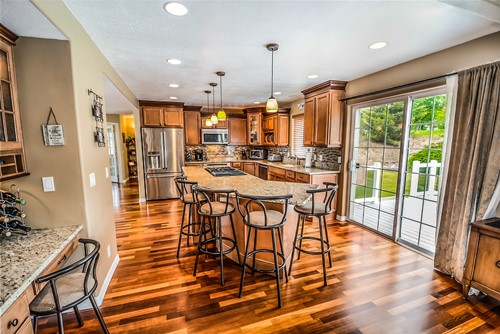
New construction continues to embrace open floor plans and increased spaciousness in traditionally small rooms. These types of home designs are already on a pathway to making residential properties more accessible to people with mobility limitations. Given that fully accessible homes would only increase the field of potential buyers, making them comply with Americans with Disabilities Act (ADA) standards is the next logical step. Construction outfits and new homebuyers can include the following elements that make homes both attractive and accessible.
1. Accessible Kitchen Designs Worth Considering
In many ways, an accessible kitchen design mirrors elements that make them ergonomic for most people. These beautiful kitchen designs employ space efficiency in a way that simplifies meal and beverage preparation. Before offering an example, it’s essential to note that an accessible kitchen typically needs to meet five ADA criteria. These include the following.
- Passthrough Space: Accessible kitchens generally require a floor space that provides a U-shaped passthrough area ranging from 40-60 inches wide.
- Preparation Space: Accessible kitchens require a minimum of 30 inches of unobstructed counter space width.
- Sinks: Easily accessed sinks must be positioned at 28-34 inches above the floor.
- Cabinets: A minimum of 50% of shelf space must be accessible to someone with a physical limitation. Wheelchair-level accessibility is often considered the standard.
- Appliances: Accessibility calls for appliances to be positioned forward with clear floor space underneath.
Meeting these accessibility guidelines is not far afield from popular kitchen layouts with center islands. Minor modifications to commonplace kitchen designs such as countertops being wall-mounted instead of on top of cabinets are relatively simple. Center islands only need an open area underneath for clearance to meet the ADA standards.
2. Attractive Accessible Entryways Worth Considering
The ADA standards for accessible entryways are not vastly different than many others. Standard doors of 36 inches often provide the minimum of 32 inches of clear space to meet the guidelines. It’s not uncommon for new construction homes to include at least one exterior doorway of 38 inches or larger to move large furniture and appliances in and out of the home. So, the doorways are typically not an impediment. The issue that causes some builders to shy away from ADA entryways is the wheelchair-accessible ramps.
One of the solutions has been to include expansive attached garages that accommodate either a ramp or wheelchair lift. The increased square-footage of attached garages improves property values and has been widely embraced by homeowners in general. Being able to pull into an attached garage during inclement weather and walking groceries up a modest incline is usually preferable to climbing stairs in the pouring rain. Placing this element in the garage also eliminates the appearance of cumbersome front-yard ramps.
3. Bathroom Grab Rails
Everyday people often consider bathroom grab rails as an element specific to handicapped bathrooms. That idea changes dramatically when someone injures their back or sprains an ankle. Accessible toilet side and back grab rails are 1.24 to 1.5 inches in thickness and must be securely mounted to the wall at heights between 33-36 inches.
By integrating these and other accessibility elements into new construction, property owners derive ergonomic space benefits. Those with physical limitations enjoy an improved quality of life. Adding these sometimes subtle design enhancements also means the home will better serve a wider demographic.
About the Author

